Over the past two decades, London has transformed into a far more cycling-friendly city than it used to be. In excess of 160,000 people cycle in the capital on a daily basis.
Hundreds of millions has been spent on cycling infrastructure in London since 2008. Although it’s not perfect, the improved and evolving cycle lanes have led to an increase of cycling in London as more and more people are opting for two wheels.
And if you’re thinking about joining them, it’s a good idea to know what is, and what’s not allowed.
Most of the cycling rules in London apply to cyclists nationwide. But when travelling in a city alongside so many other bikes, cars, and pedestrians, the rules should be known by everyone.
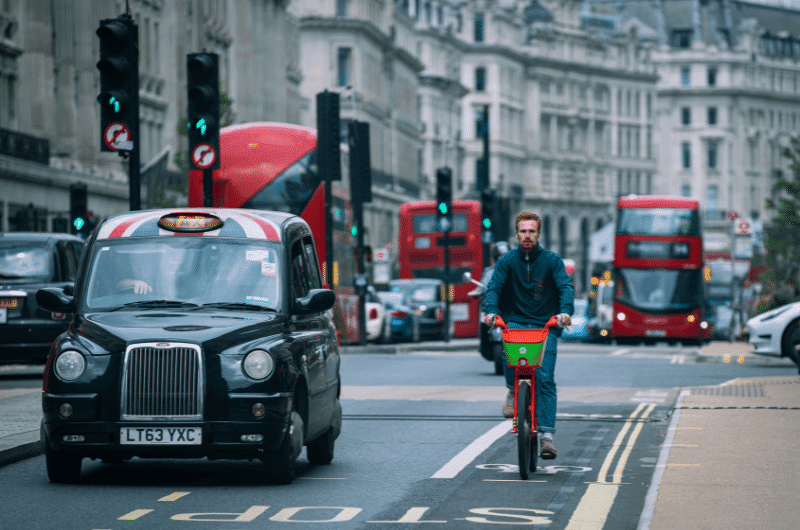
London Cycling Rules
- Ride on the left hand side of road and never against the flow of traffic
- Cyclists must obey all traffic signs and traffic light signals
- Do not ride on pavements unless they are designated cycle lanes
- Do not ride in pedestrian-only areas, and be mindful of signs prohibiting cycling
- At junctions, you should give way to pedestrians crossing or waiting to cross a road
- Cyclists may not ride over a zebra, pelican or puffin crossing
- Cyclists may ride over a toucan crossing (light-controlled for cyclists and pedestrians) when the light turns green
- Cyclists must stay on their designated side of a shared cycle track and should give way to pedestrians
- You may not carry a passenger (unless the bike is specially adapted to carry one)
- You must not hold on to a moving vehicle or trailer
- Do not ride when under the influence of drink or drugs, including medicine
- Cyclists have priority (over motorists) at junctions and roundabouts
- You may pass slow moving traffic if it is safe to do so
- You should use hand signals to indicate when turning
- Do not ride in a dangerous, careless or inconsiderate manner
Cycling Penalties
| Offence | Maximum Fine |
| Dangerous cycling | £2,500 |
| Careless Cycling | £1,500 |
| Cycling on the pavement | £500 |
| Cycling in pedestrian-only area | £500 |
| Riding through a red traffic light | £50 |
It’s worth mentioning that whether or not a fine is given is at the discretion of the police, and dependent on the circumstances. But as all of these offences are safety-related, it’s not worth taking the risk.
Can You Cycle Anywhere in London?
No, you cannot cycle anywhere in London. Cyclists may not use pedestrian areas unless they are designated as shared cycle lanes. You can cycle on most roads, including dual carriageways, unless there are signs stating otherwise. Cycling on motorways is not allowed.
You may also cycle in the middle of the road (in spite of some motorists’ insistence to the contrary). This is called taking ‘primary position’ and is advisable, as stated in Rule 213 of The Highway Code, when approaching junctions or when it is unsafe for motorists to overtake you.
Public Transport
You can take bikes on some forms of public transport in London, namely TfL Rail, the London Overground and the DLR. However, this is only allowed at certain times so you do need to check the TfL rules. Bikes cannot be taken on buses or trams.
Folding cycles are allowed on London public transport at any time, including buses and trams.
Can You Cycle on the Pavement in London?
The short answer is no. Cycling rules state that it’s illegal to cycle on the pavement in London unless it is a designated cycle track shared with pedestrians. In this case, you must keep to the side intended for cyclists and give way to pedestrians, even if they have strayed over to your side.
The maximum fine for cycling illegally on a pavement is a hefty £500.
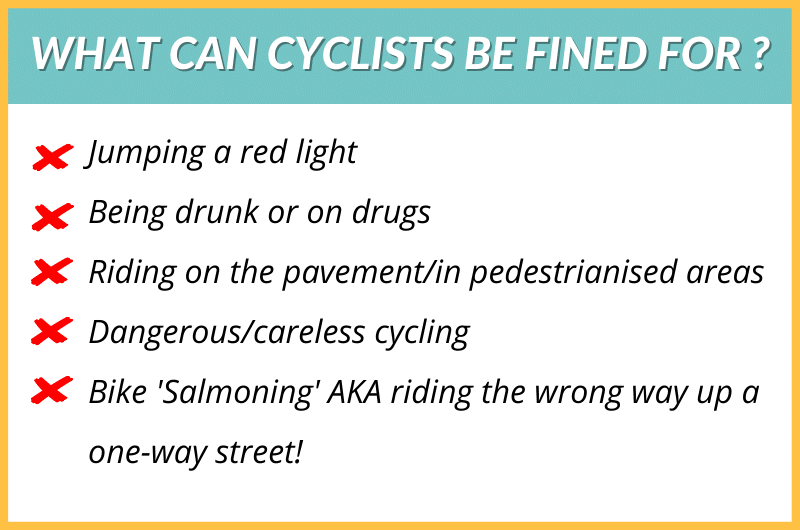
Do Cyclists Have to Use Cycle Lanes?
Cyclists are not obliged to use cycle lanes in London but are advised to do so in accordance with Rule 61 of The Highway Code.
It’s generally safer to use cycle lanes, which is why they’re there. But it’s not always practical if there are parked cars. It’s safer to be seen at all times than to be intermittently swerving out into the road around stationary vehicles.
Can Cyclists Ride in Bus Lanes in London?
Most bus lanes in London can be used by cyclists, but you should check the blue bus lane sign. If there is a bicycle icon on the sign then cycling is allowed. It may not be permitted if there is no bicycle icon.
Cycling rules don’t permit you to pass between the kerb and the bus when it’s at a stop, as this could be dangerous to people getting on and off the bus.
And as buses stop and start frequently, for your own safety it’s unadvisable to undertake (on the left hand side).
Do Cyclists Have to Ride Single File?
Cyclists do not have to ride single file. Although some car drivers might protest otherwise, cyclists can ride two abreast at no more than 1.5 metres apart. Riding more than two abreast is not allowed.
Riding side by side is appropriate when roads are too narrow for cars to safely overtake. Motorists should only overtake cyclists when there is sufficient space and visibility (as they do with cars).
Riding two abreast prevents the more impatient type of motorist from trying to squeeze past when there isn’t enough room.
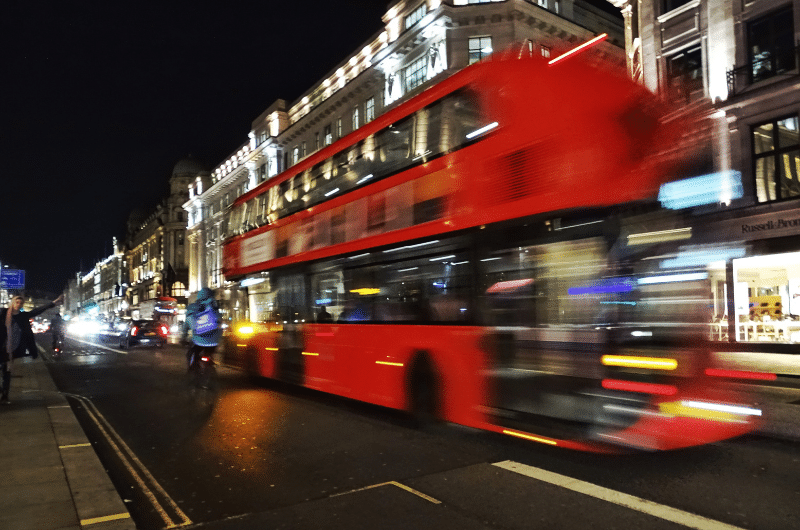
Do Cyclists Have to Have Lights?
Legally, yes. Cycling rules state that cyclists must have lights on their bike between sunset and sunrise. Rule 60 of The Highway Code requires your cycle to have white front and red rear lights lit at night. You must also have a fitted red rear reflector.
Flashing lights are accepted if they flash between 60 – 240 times per minute, but it’s advisable to use a steady front light alongside.
Do Cyclists Have to Wear Helmets?
Wearing a cycle helmet is not a legal requirement in the UK, although it’s considered much safer to do so. Wearing a good-fitting helmet that conforms to current safety regulations can greatly reduce head injury in an accident.
People do have opposing opinions on bike helmets and their effectiveness. Most Dutch cyclists don’t wear helmets and cycling is statistically safer in the Netherlands, but this is because most Dutch cycle lanes are separate from car traffic.
Cycling in London or other busy cities in the UK is a different story. You’ll often find yourself sharing roads with cars and other vehicles, which is why wearing a helmet is a good idea.
Cycling Safety
Some safety-related cycling rules, such as not wearing helmets, are advisory rather than a legal requirement. But it’s worth noting a few key issues and behaviours for keeping safe on your bike.
Cycling Hand Signals
You don’t legally have to use cycling hand signals, but you should do so. Not only is it considerate to other cyclists, pedestrians and motorists to show your intention, but it’s safer too.
And keep them simple. Complicated signals (that most people have never heard of) will just confuse (and even agitate) your fellow road users.
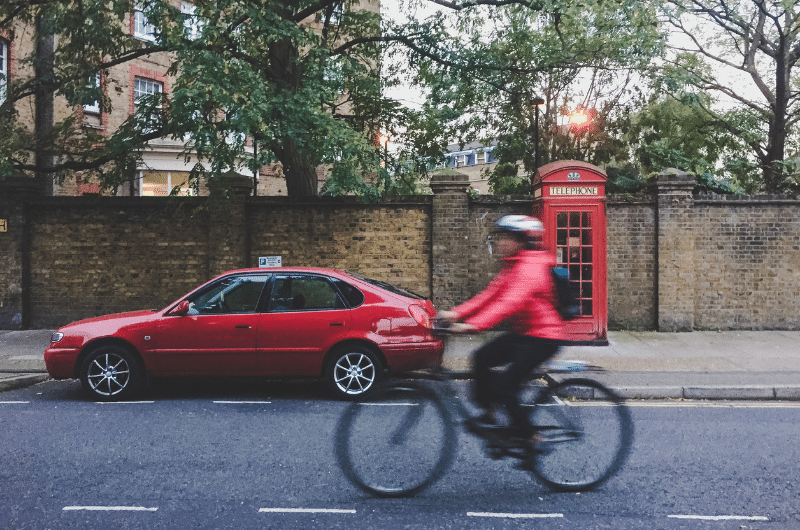
Cycling at Junctions
In spite of what certain newspapers protest, cyclists DO have right of way at junctions. Recent changes to The Highway Code requires drivers to give priority to cyclists when turning in or out of a junction (Rule H3). Cyclists must still give way to pedestrians.
It’s generally recommended that you approach a junction as if you were a motor vehicle. The Highway Code advises moving to the middle of the road and indicating. Drivers should let you go first.
And whatever you do, don’t try to undertake vehicles already turning left. Not unless you want to find yourself squashed. Never assume that motorists always check their mirrors. And even if they do, you could be in a blind spot.
Above all, if you don’t feel safe, simply get off and wheel the bike across.
Cycling Speed Limits
Technically, there are no national speed limits for bicycles, but speed limits for motorists are there for good reason and should also be respected when cycling.
If you’re hurtling through residential streets above the speed limit, well, just don’t! You’re presenting a danger to others and yourself.
Speeding can be deemed as ‘careless or dangerous cycling’, which carries a huge fine, or even a prison sentence if an accident is caused.
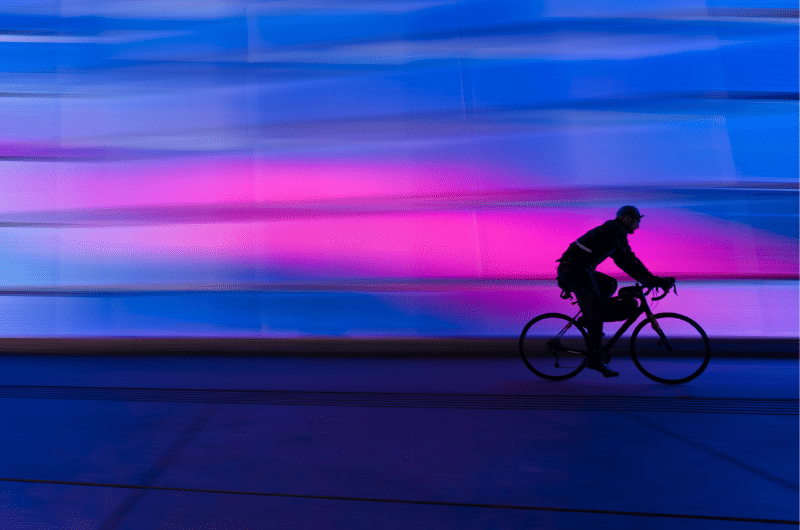
Cycling with Headphones
It is legal to wear headphones when cycling, but for obvious reasons it’s not safe to do so. Rule 67 of The Highway Code instructs cyclists to “be aware of traffic coming up behind you”. It’s much harder to do this with headphones on.
Transport for London has been threatening to ban cyclists from wearing headphones since around 2013, but it still hasn’t happened. If you are involved in an accident, even if it wasn’t your fault, wearing headphones could be seen as ‘contributory negligence’.
Bells
Bells are not legally required on bikes but they are recommended. It’s a non-aggressive way of letting pedestrians and other cyclists know you’re coming. And, let’s be honest, it’s much nicer than shouting at people.
The post Cycling Rules in London [Laws + Punishments Explained] appeared first on Discerning Cyclist.
![Cycling Rules in London [Laws + Punishments Explained]](https://bicycle.org/wp-content/uploads/2022/05/cyclist-london-taxi-760x504.png)